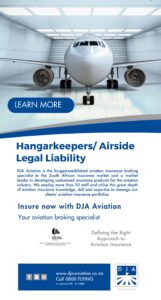Tag Archives: Airlines
More aircraft to leave SAA!
Sawubona! For many years South African Airways have been our national carrier connecting South Africans to the world and the world to South Africa. South African Airways is as much a part of our lives as is rugby, soccer or just being social. South African Airways has represented South Africa and her people on many occasions from flypasts at big sporting events and presidential inaugurations to flying our Olympic Teams all over the world. SAA helped unite South Africa in many ways… who will forget the 1995 Rugby World Cup, the kick, Mr Mandela and the SAA B747 flypast?
For some time now, South African Airways have been struggling to get the books to balance and various attempts to better the situation have been attempted but for now another chapter has started. It is with a heavy heart that we have to report that SAA are to send back 20 leased aircraft to their lessors. The aircraft, their departing dates and destinations are:
Airbus A320 – 200’s
ZS-SZB : 14 July 2020 – Slovenia
ZS-SZC : 14 July 2020 – Slovenia
ZS-SZD : 14 July 2020 – Slovenia
ZS-SZF : 14 July 2020 – France
ZS-SZG : 14 July 2020 – Estonia
ZS-SZH : 14 July 2020 – France
Airbus A330-300’s
ZS-SXI : 15 July 2020 – France
ZS-SXK : 15 July 2020 – France
ZS-SXJ : 15 July 2020 – France
ZS-SXL : 15 July 2020 – Netherlands
ZS-SXM : 15 July 2020 – TBA
Airbus A330-200’s
ZS-SXU : 10 July 2020 – Spain
Airbus A350-900’s
ZS-SDC : 10 July 2020 – Spain
ZS-SDD : 10 July 2020 – Spain

No matter what the future hold for South African Airways, the flying Springbok, the people who work there and the beauties that grace our skies will forever be etched in our hearts and be a symbol of pride, our national colours and the warm hospitality of a nation.
Airline Debt to Balloon by 28% Heavy New Debt Levels Will Weigh Down Airline Recovery
Geneva – The International Air Transport Association (IATA) released analysis showing that the airline industry’s global debt could rise to $550 billion by year-end. That’s a $120 billion increase over debt levels at the start of 2020.
- $67 billion of the new debt is composed of government loans ($50 billion), deferred taxes ($5 billion) and loan guarantees ($12 billion).
- $52 billion is from commercial sources including commercial loans ($23 billion), capital market debt ($18 billion), debt from new operating leases ($5 billion), and accessing existing credit facilities ($6 billion).
Financial aid is a lifeline to get through the worst of the crisis without folding operations. But during the re-start period later this, the industry’s debt load will be near $550 billion—a massive 28% increase.
“Government aid is helping to keep the industry afloat. The next challenge will be preventing airlines from sinking under the burden of debt that the aid is creating,” said Alexandre de Juniac, IATA’s Director General and CEO.
In total governments have committed to $123 billion in financial aid to airlines. Of this, $67 billion will need to be repaid. The balance largely consists of wage subsidies ($34.8 billion), equity financing ($11.5 billion), and tax relief / subsidies ($9.7 billion). This is vital for airlines which will burn through an estimated $60 billion of cash in the second quarter of 2020 alone.
“Over half the relief provided by governments creates new liabilities. Less than 10% will add to airline equity. It changes the financial picture of the industry completely. Paying off the debt owed governments and private lenders will mean that the crisis will last a lot longer than the time it takes for passenger demand to recover,” said de Juniac.
Regional variations
The $123 billion in government financial aid is equal to 14% of 2019’s total airline revenues ($838 billion). The regional variations of the aid dispersion indicate that there are gaps that will need to be filled.

There are still large gaps in the financial aid needed to help airlines survive the COVID-19 crisis. The US government has led the way with its CARES Act being the main component of financial aid to North American carriers which in total represented a quarter of 2019 annual revenues for the region’s airlines. This is followed by Europe with assistance at 15% of 2019 annual revenues and Asia-Pacific at 10%. But in Africa, the Middle East and Latin America average aid is around 1% of 2019 revenues.

“Many governments have stepped up with financial aid packages that provide a bridge over this most difficult situation, including cash to avoid bankruptcies. Where governments have not responded fast enough or with limited funds, we have seen bankruptcies. Examples include Australia, Italy, Thailand, Turkey, and the UK. Connectivity will be important to the recovery. Meaningful financial aid to airlines now makes economic sense. It will ensure that they are ready to provide job-supporting connectivity as economies re-open,” said de Juniac.
The Impact of Debt
The kind of aid provided will influence the speed and strength of the recovery. IATA urged governments still contemplating financial relief to focus on measures that help airlines raise equity financing. “Many airlines are still in desperate need of a financial lifeline. For those governments that have not yet acted, the message is that helping airlines raise equity levels with a focus on grants and subsidies will place them in a stronger position for the recovery,” said de Juniac.
“A tough future is ahead of us. Containing COVID-19 and surviving the financial shock is just the first hurdle. Post-pandemic control measures will make operations more costly. Fixed costs will have to be spread over fewer travelers. And investments will be needed to meet our environmental targets. On top of all that, airlines will need to repay massively increased debts arising from the financial relief. After surviving the crisis, recovering to financial health will be the next challenge for many airlines,” said de Juniac.

Last week, the IATA Board of Governors committed to five key principles for the industry re-start. Among these are commitments to the safety and security of staff and travelers, to meeting the industry’s environmental targets and to being a meaningful driver of the economic recovery with affordable connectivity.




